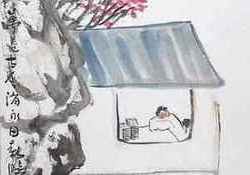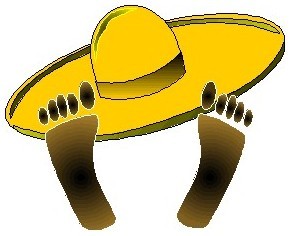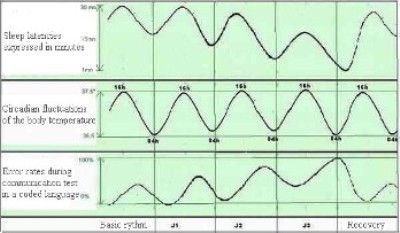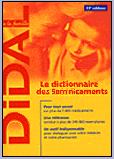Home > Welcome > Sleep-wake pathologies > Know how to sleep > The nap > The nap
The nap
Friday 27 July 2007
All the versions of this article: [English] [français] [français]
The nap is the keystone of the chronobiological balance of sleep.
It must not contribute to conceal a pathological excessive sleepiness.
It is a powerful (double edged) weapon that has to be handled with care because the need to sleep in the start of the afternoon is physiological for some but pathological in others.
Be careful! The practice of the nap must not conceal a pathological sleepiness.
The nap in a subject who suffers of overweight and hypertension must lead to a systematic investigation of a sleep apnea syndrome.
"Sleep and general medicine" dedicates three articles to the nap :
- The nap : indications, contraindications and cautions for use;
- Leaflet "General public somnication";
- Sheet for the health professionnals : "RGP - Recommendations for good practice".
"The nap is a medication, read the leaflet carefully"
«Siesta : time that is given to sleep, during the warmest part of the day...» (Émile Littré, Dictionary of the French language, 1863-1872).
From the Latin sexta hora, the sixth hour, which corresponded to the middle of the day, noon, for the Romans (the first hour being that of sunrise).

- Nap (Chunxiao J.)
That deliberate episode of sleep possesses beneficial powers known since the start of mankind. It is therefor a "sleep that heals" but the discovery of a sleep descrived as REM sleep in the 50’s (by the Pr. M. Jouvet in Lyon and Pr. W. Dement in the United States) and that of internal rythms (1962, out of time speleological experiments of Michel Siffre [1] ) have given the nap a true dimension of a medication.

- Life hygiene, disease? Or choice of living...?
Like for aspirin, that "somnications" doesn’t have the same effect whether it is administered in very small doses close in time (15 minutes every two hours like for solitary navigators) or, on the contrary,"on demand", at "a strong dose" or even at a "massive dose" (like tennagers readily do on Sundays).
- Sleep hygiene ... ?
- Pathological sleepiness ... ?
- Choice of life ... ?
- Dali had a very short nap, just long enough to drop the teaspoon he held in his hand;
- Colette slept as much as her cat till the evening;
- Napoleon sometimes fell asleep under his tent in the middle of a battle (because he didn’t sleep enough), much to the annoyance of his generals;
- In the West Indies, people have a naughty nap when it rains on the undulated sheet roof ... ;
- In China, it is a constitutional right (nearly an obligation) since Mao who wished to enhance, that way, the efficiency of the workers (15h/24 ...);
- The nap is especially practiced in the warm countries, at the most burning hours of the day, when the sun is at its highest and because people get up early;
- Because of the shift of the evening mealtime, many Spanish people go to sleep late, get up early and have to compensate their sleep debt with a nap.
- Because of their obligations, many farmers (particularly breeder farmers) have a nap in order to "keep going".
"In case of doubt, do not hesitate to ask your doctor or pharmacist’s opinion. "
The word "nap" covers very different concepts according to the schedule, the duration and the circumstances of occurrence of the sleep episode.
In the absence of somnological knowledge, since everybody has different needs (and intakes) of sleep and since everybody sees (in this context more than anywhere else) is persuaded to know better, how should this question be answered :
Are two sleeps more valuable than one ?
In experimental conditions of sleep deprivation, the nap has proven its extreme efficiency.

- 3 hours of sleep are enough to restore vigilance
In this study (made with soldiers, presented by Pr Jouvet), the collapse of the performances and vigilance over four days without sleep has been measured.
The circadian variations of the two curves linked to the cycle of the temperature and their change as the days go by can be seen easily.
Above all, note the spectacular speed of recovery on the 4th day, after only 3 hours of sleep and without that we know exactly why !
The nap is thus recommended to restore vigilance and compensate an occasional sleep debt. - On the other hand, it must not contribute to compensate (and conceal) an excessive sleepiness and, thereby, delay its diagnosis.
- A nap, even very short, can contribute, in the insomniac person, to maintain an insomnia over several days!
The power of the nap must be particularly highlighted in the context of the caretaking of insomnia.
In the insomniac subject, the naps are sometimes made of a sleep that is very rich in slow waves, described as "rebound sleep", like the solitary navigators willingly use. That way, they manage, paradoxically, "thanks to the nap", to keep going with very little sleep (3 or 4 hours a day). - "Clinophilia" is a tendency to spend a lot of time lying (in declive position).
In psychiatry, it is considered to be a symptom associated to depressive or psychotic disorders.
In somnology, it is a differential diagnosis criteria from excessive daytime sleepiness. The subject stays in a lying position and asserts to sleepbut the recording shows that, in fact, sleep duration is not increased like it would be in an hypersomniac subject.
On the opposite, in the majority of insomniac subjects, we notice a strong clinophile tendency around 6 to 8 PM (or in the morning when it is possible). The subject (who suffers from tiredness and not from sleepiness) tries to "rest" but doesn’t sleep.
In "somnicology", that type of "pseudonap" (often wrongly considered to be "beneficial"), must be screened systematically.
The treatment of tiredness relies on the use of somnications that stimulate the arousal because the reduction of daytime activity (even without sleeping) is very harmful for the efficiency of the nocturnal sleep.A radical change in mentalities.
For a long time, the practice of the nap has been considered as abnormal. It was reserved for the children, the old people and the sick persons.
And the sleepy subjects suffered secretly in order not to appear like lazy people to the eyes of the "normal" people...An opposite tendency develops itself nowadays, in response to the problems of excessive daytime sleepiness that we encounter in modern societies.
The sleep doctors and the authorities, sensible to the statistics of (traffic, work....) accidents, have "communicated" a lot on the theme of: "The nap is a good habit".
And the insomniac subjects who have heard that "it was necessary to have naps" maintain a true vicious circle.In the absence of agreement, empiricism is the rule, everybody agrees with him/herself and formulates advices that are irrelevant.

All in all, nobody knows exactly what to think about it ...
.. while the sleep problematics (tiredness, insomnia, sleepiness) are in constantly getting worse in modern societies.
"Sommeil-mg" wishes to contribute to promote useful knowledge for a rational use of the nap :
THE NAP, indications and precautions of usei.
Detailed, official and up-to-date information about the medication.
The "SPC" (Summary of the Product Characteristics) constitutes the source of medico-legal information designed for the health professionals.
The SPC sheet about the nap did not exist, we decided to invent it for the website"Smg".The neophyte reader can usefully refer to the document "Didal of the private individual" which is more concise, and designed for the general public.
In what cases and how to use that "somnication ? Which are its undesirable effects? What are its contraindications?

- More information...
- Michel Siffre and his clock of flesh (in French).
- Chronobiology and phototherapy, Dr Anna Wirz-Justice (Pdf., 65 pages in English, Chronobiologie.ch).
[1] Michel Siffre (young speleologist of 22, from Nice) first wants to try to survive in a hostile environment (in the underground glacier of the gorge of Scarasson, at 2000 m of altitude in the southern Alps), then he completes his project with the study of the "loss of the sense of time" : he decides not to take any watch with him in order to retrieve "man’s original rythm". It is the first experience of long time isolation in man. Back to text

